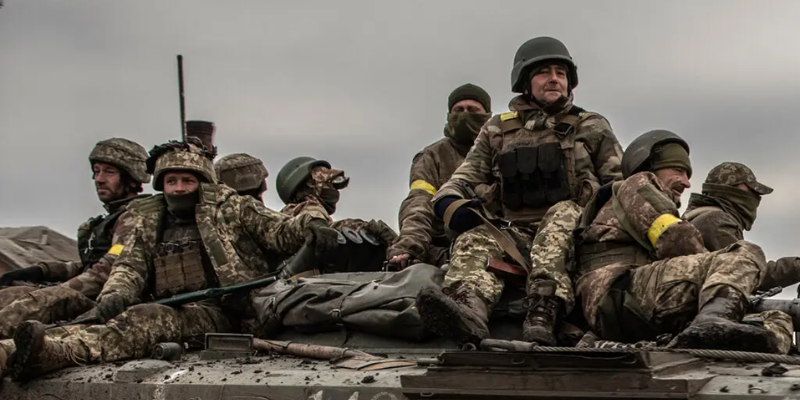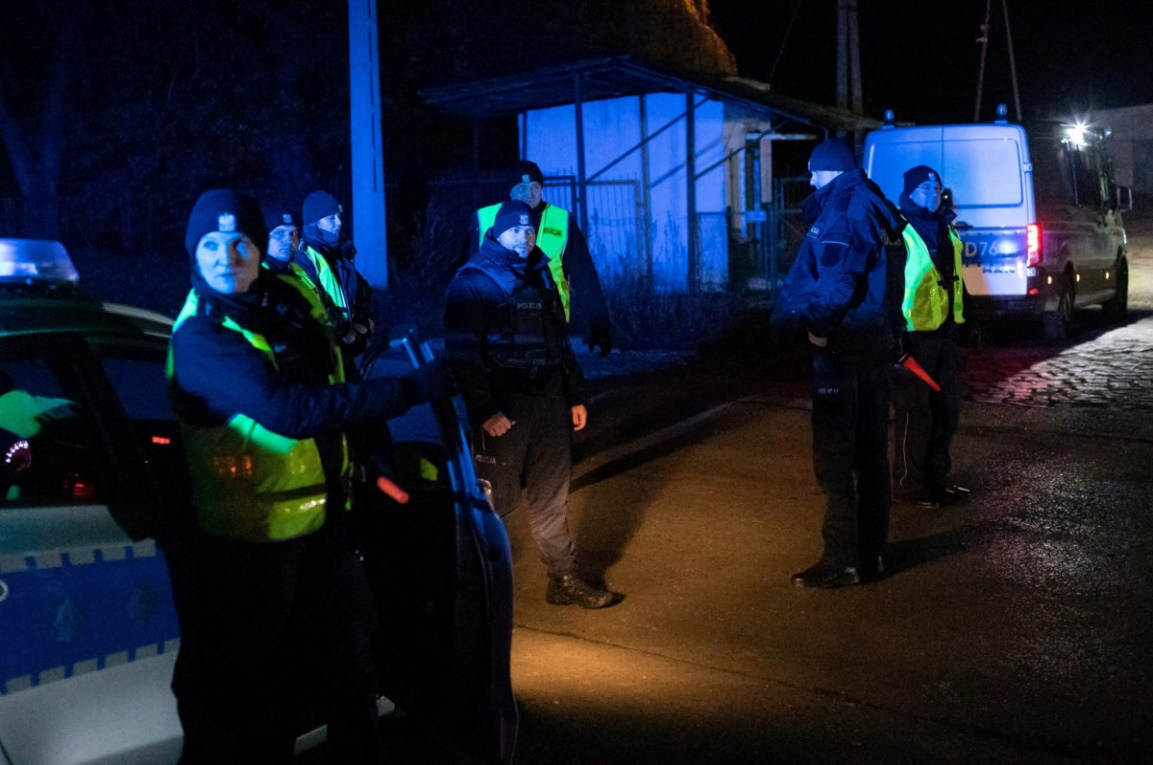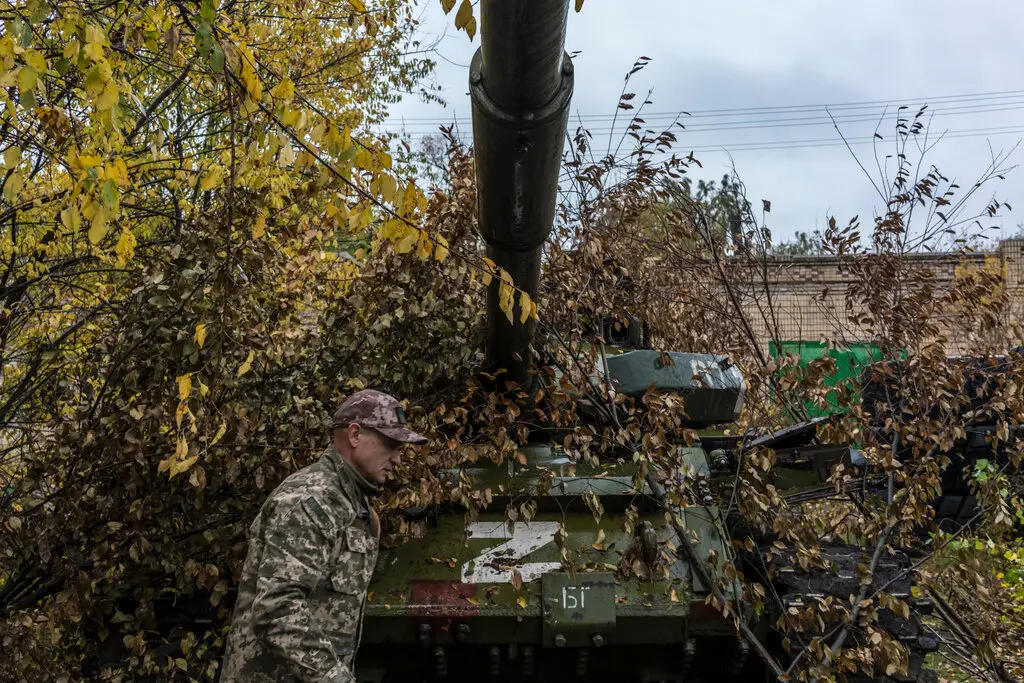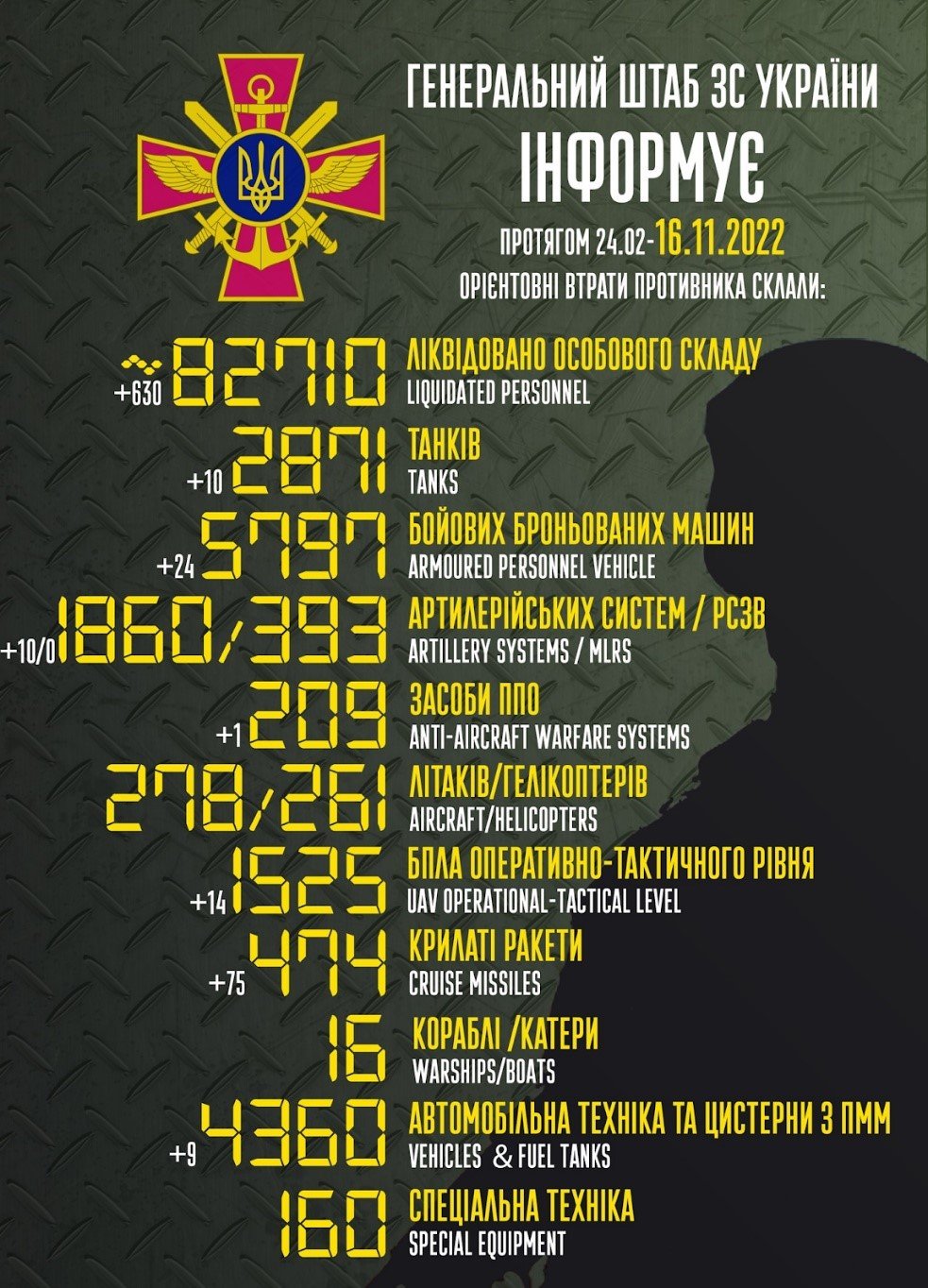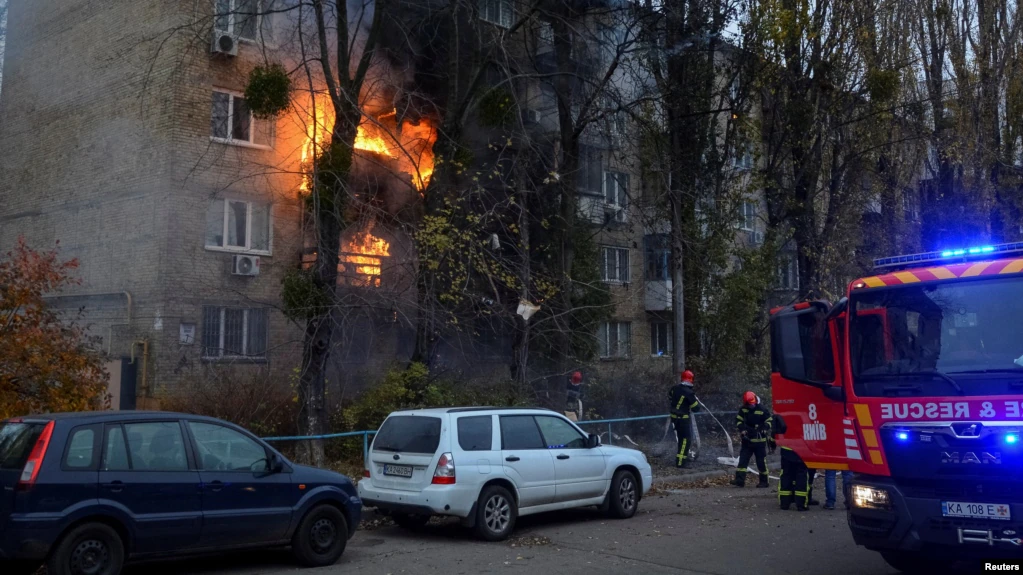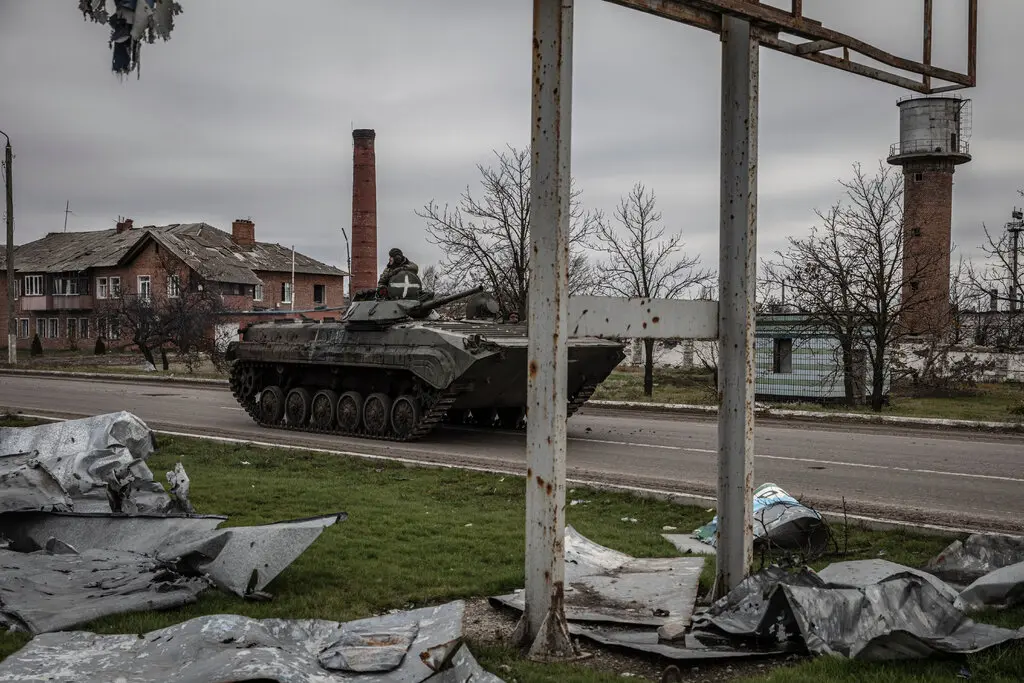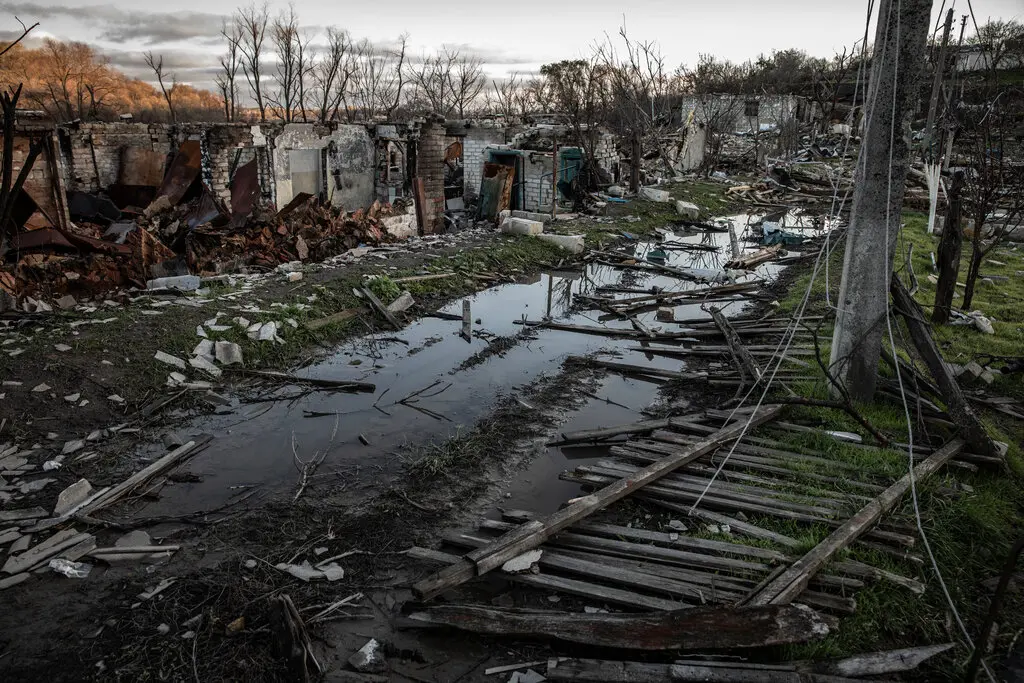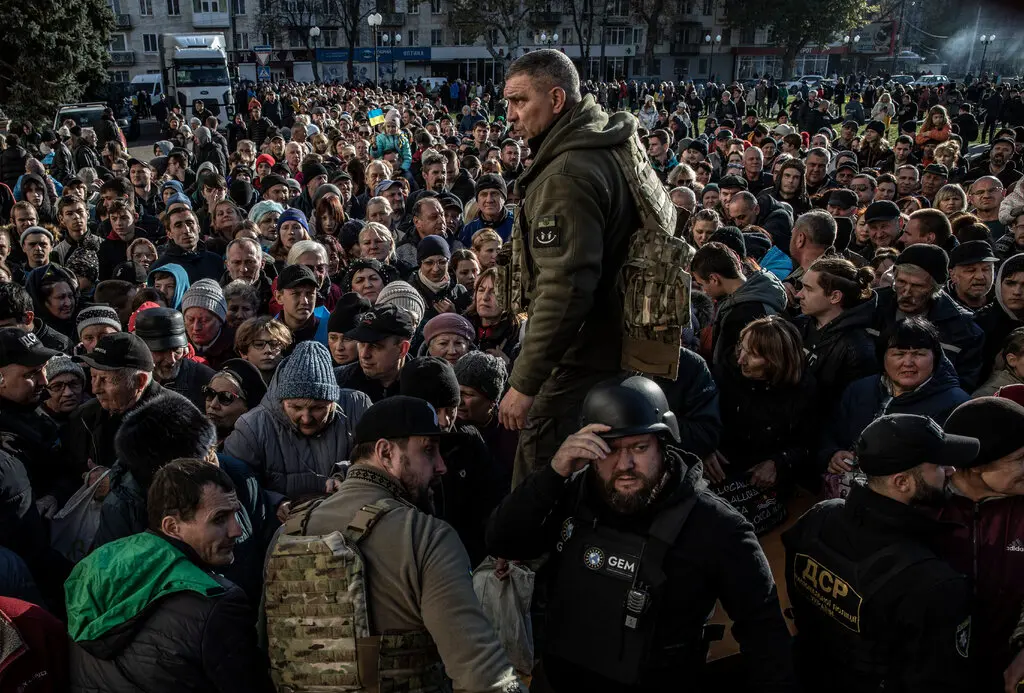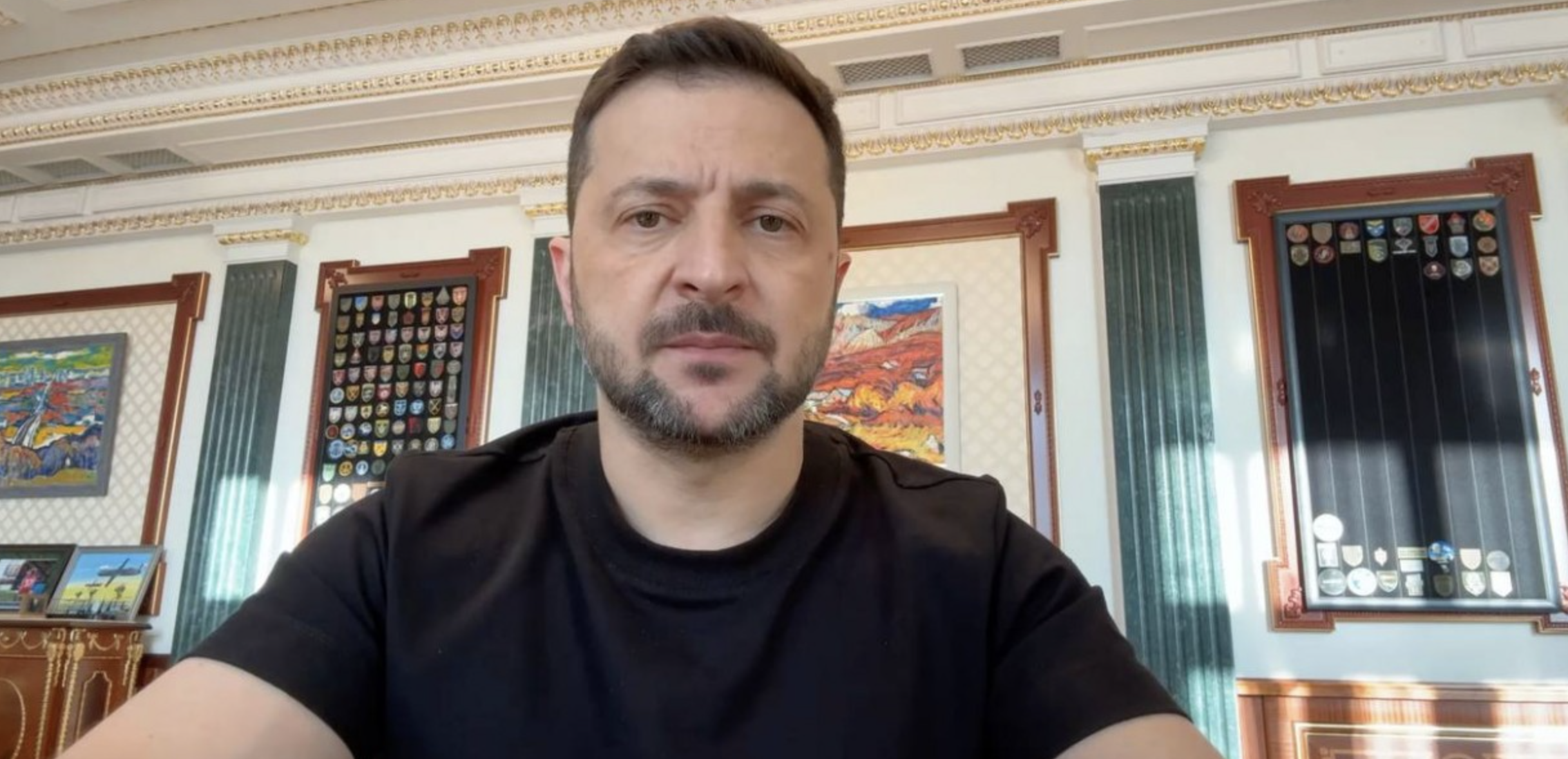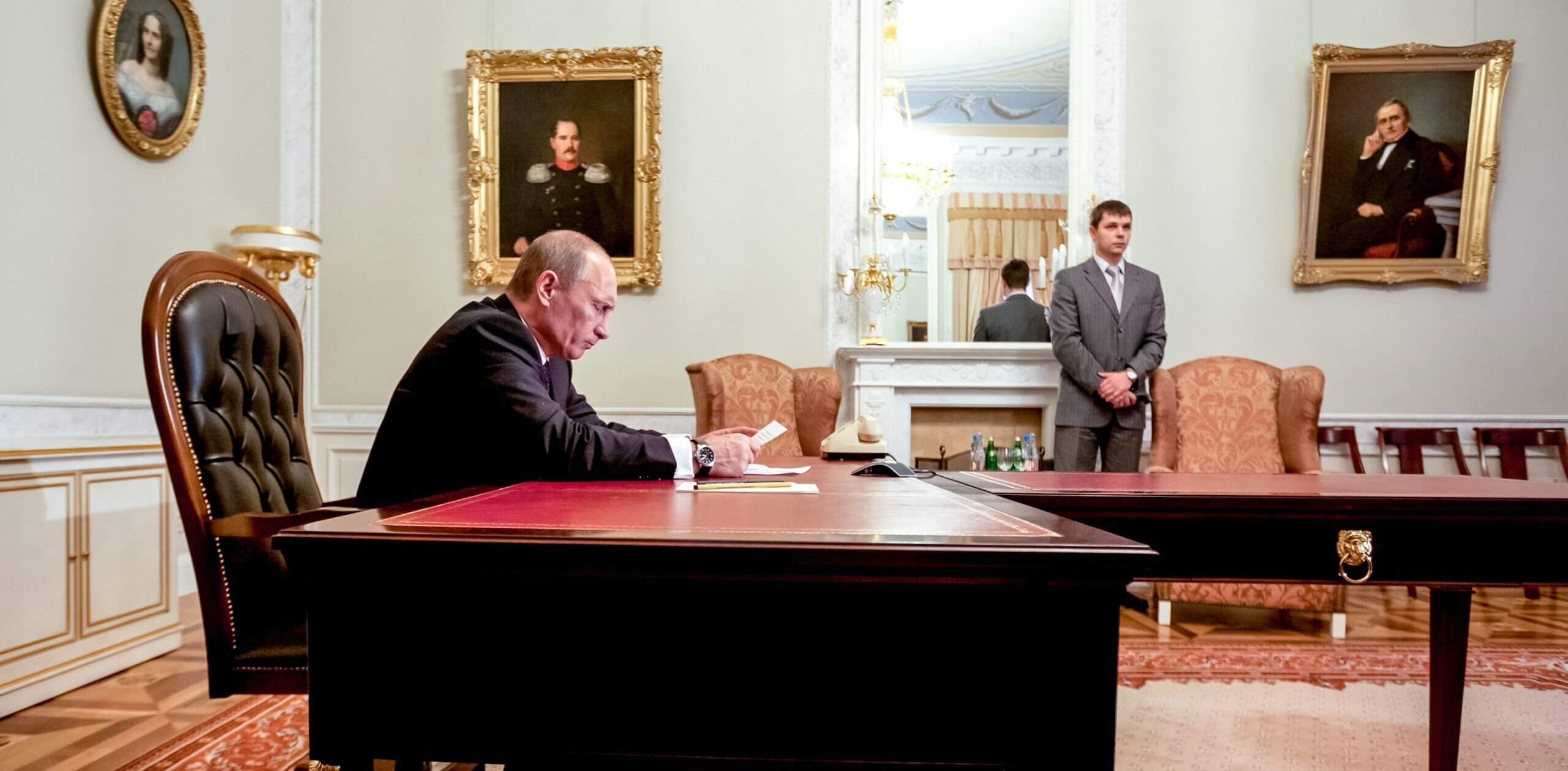Above: The war came to Poland Tuesday. Here, Polish police gather at the site of missile strikes six kilometers from the Ukrainian border. (PBS)
- Russian forces conducted the largest set of missile strikes against Ukrainian critical infrastructure since the start of the war. Ukrainian Air Force Command spokesperson Yuriy Ignat reported on November 15 that Russian forces launched about 100 Kh-101 and Kh-555 cruise missiles at targets in Ukraine, primarily against Ukrainian critical infrastructure facilities.
- Ukrainian and Russian sources reported that Russian forces struck targets in Kyiv as well as in Rivne, Zhytomyr, Lviv, Khmelnytskyi, Dnipropetrovsk, Poltava, Vinnytsia, Odesa, Kirovohrad, Cherkasy, Volyn, and Kharkiv
- The Ukrainian General Staff reported that Ukrainian air defenses shot down 73 Russian cruise missiles and all drones on November 15.
- The Russian military likely used a substantial portion of its remaining high-precision weapon systems in the coordinated missile strikes on November 15.
- Polish officials announced that a likely “Russian-made missile” landed in Poland within six kilometers of the international border with Ukraine. Western officials have yet to make definitive statements regarding the incident.
- The Kremlin had prepared today’s massive missile campaign before Ukrainian President Volodymyr Zelenskyy presented his 10-point peace proposal at the G20 summit on November 15. Zelensky reiterated that Ukraine will negotiate with Russia if the Kremlin totally withdraws its forces from Ukraine, restores Ukraine’s territorial integrity, and ensures punishment for war crimes among other provisions on nuclear, energy, and food security.
Above: An abandoned enemy T-62 tank in Kherson. (New York Times)
Ukrainian General Staff of the Armed Forces estimated enemy losses for last 24 hours
- Liquidated personnel, 82,710 (+630)
- Tanks, 2,871 (+10)
- Armored personnel vehicles, 5,797 (+24)
- Artillery systems/MLRS, 1,860/393 (+10/0)
- Anti-aircraft warfare systems, 209 (+1)
- Aircraft/helicopters, 278/261 (0)
- UAV operational-tactical level, 1,525 (+14)
- Cruise missiles, 474 (+75)
- Warships/boats, 16 (0)
- Vehicles and fuel tanks, 4,360 (+9)
- Special equipment, 160 (0)
Above: Missiles hit in the heart of Kyiv, civilians killed. (RFERL)
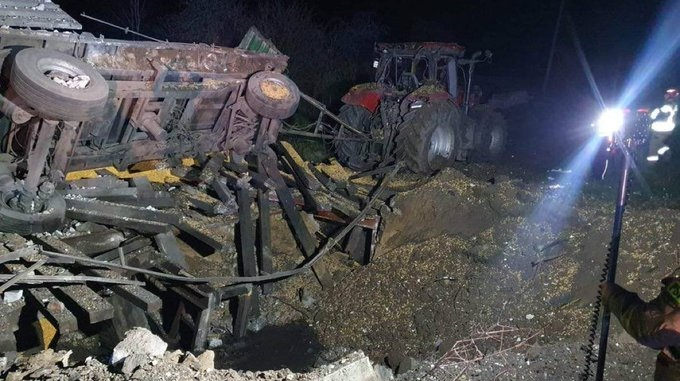
Above: Orcs struck a farm in Poland on November 15th. (Euractiv)
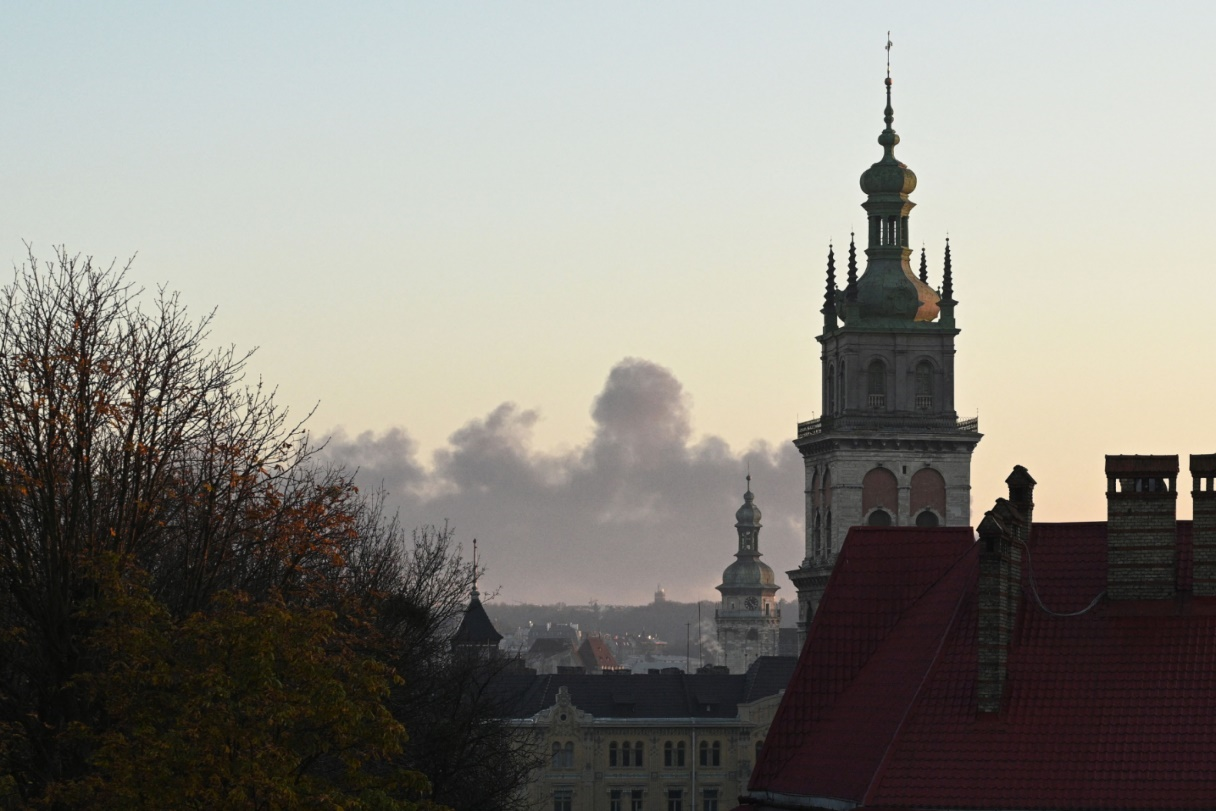
Above: “Smoke rising after Russian missile strikes on Lviv, Ukraine, about two hours south of the Polish village that was reportedly struck by a Russian projectile.” Lviv was reported 80% without energy Tuesday night. (Rolling Stone)
Above: “A Ukrainian armored vehicle returning from the frontline in the city of Kupiansk-Vuzlovyi in the Kharkiv region. Ukraine will need a long-term buildup of tanks and other weapons to make advances.” (New York Times)
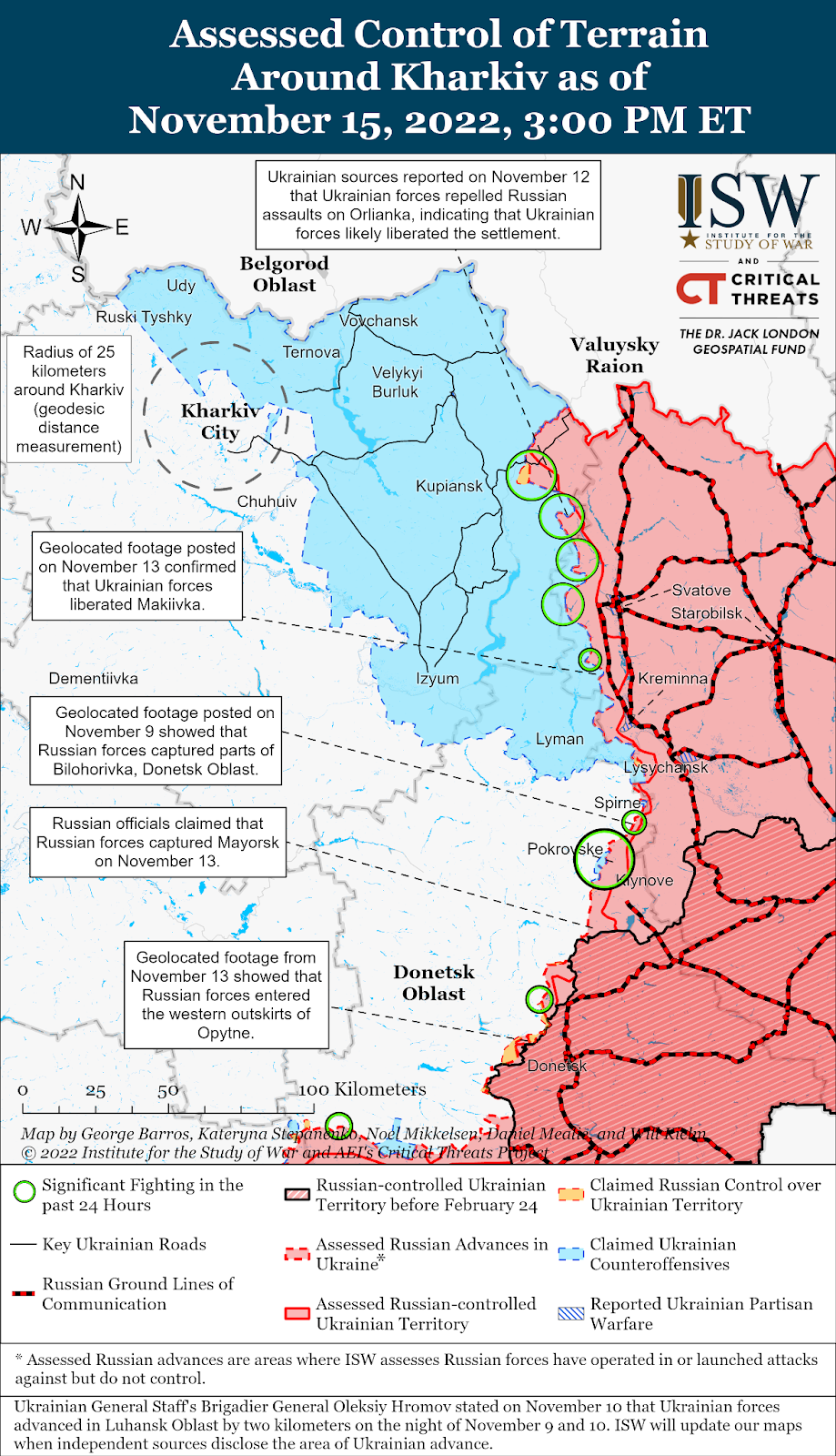 Map via ISW
Map via ISW- Russian sources claimed that Ukrainian forces continued counteroffensives in the direction of Svatove and Kreminna, and Ukrainian forces continued targeting Russian logistics to the rear of Luhansk Oblast.
- A Ukrainian source stated that there was heavy fighting in the area of Novomykilske (9km south of Svatove).
- Ukrainian forces continued to target Russian military logistics and concentration areas in Luhansk Oblast on November 15. The Ukrainian General Staff reported that Ukrainian artillery units struck Russian positions in Kreminna and that the personnel from degraded units are planning to escape from the city.
Above: Muddy conditions in eastern Ukraine are already complicating operations. With Ukrainian momentum, some analysts think that winter freeze will improve Ukrainian counteroffensive capacity. (New York Times)
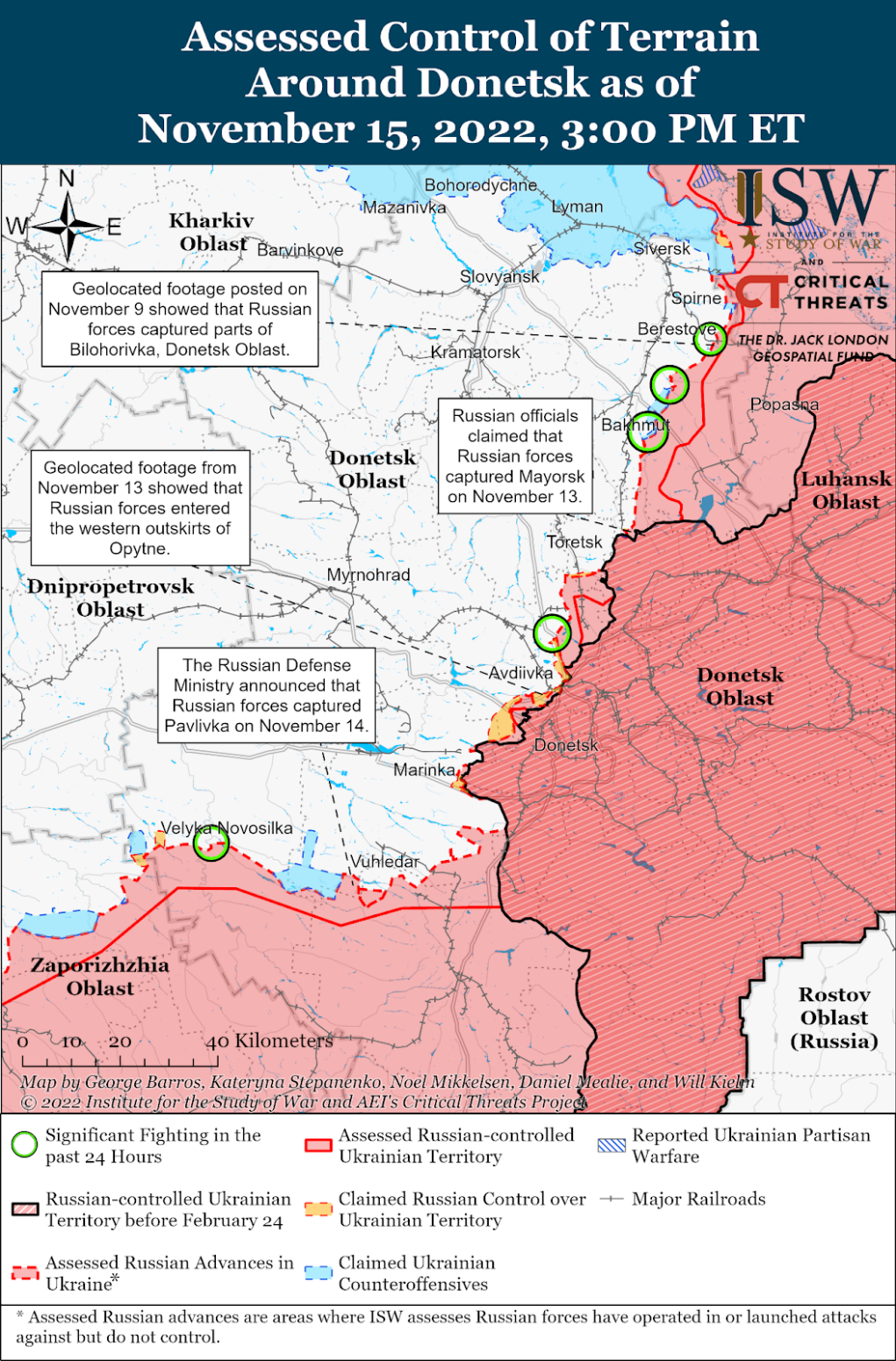 Map via ISW
Map via ISW- Russian forces continued offensive operations around Bakhmut on November 15. The Ukrainian General Staff reported that Ukrainian forces continued to repel Russian ground attacks near Bakhmut, and northeast of Bakhmut near Bilohorivka and Bakhmutske along the T1302 highway.
- Russian military commanders reportedly ignored existing plans for offensive operations in the Vuhledar direction and committed poorly trained reinforcements to costly assaults on Pavlivka out of impatience. Donetsk People’s Republic (DNR) military commander Aleksandr Khodakovsky claimed on November 15 that Russian forces initially planned to attack in the Vuhledar area from two directions but that he and other commanders realized that the poor training of reinforcements and their inability to contact brigade commanders made such plans impossible.
- Russian forces continued to carry out offensive operations in the Avdiivka-Donetsk City area on November 15. The Ukrainian General Staff reported that Ukrainian forces repelled Russian ground attacks near Krasnohorivka and Pervomaiske on the northwestern outskirts of Donetsk City and Marinka and Novomykhailivka on the southwestern outskirts of Donetsk City.
Above: “Crowds gathering for a food distribution in Kherson, in southern Ukraine, on Tuesday.” (New York Times)
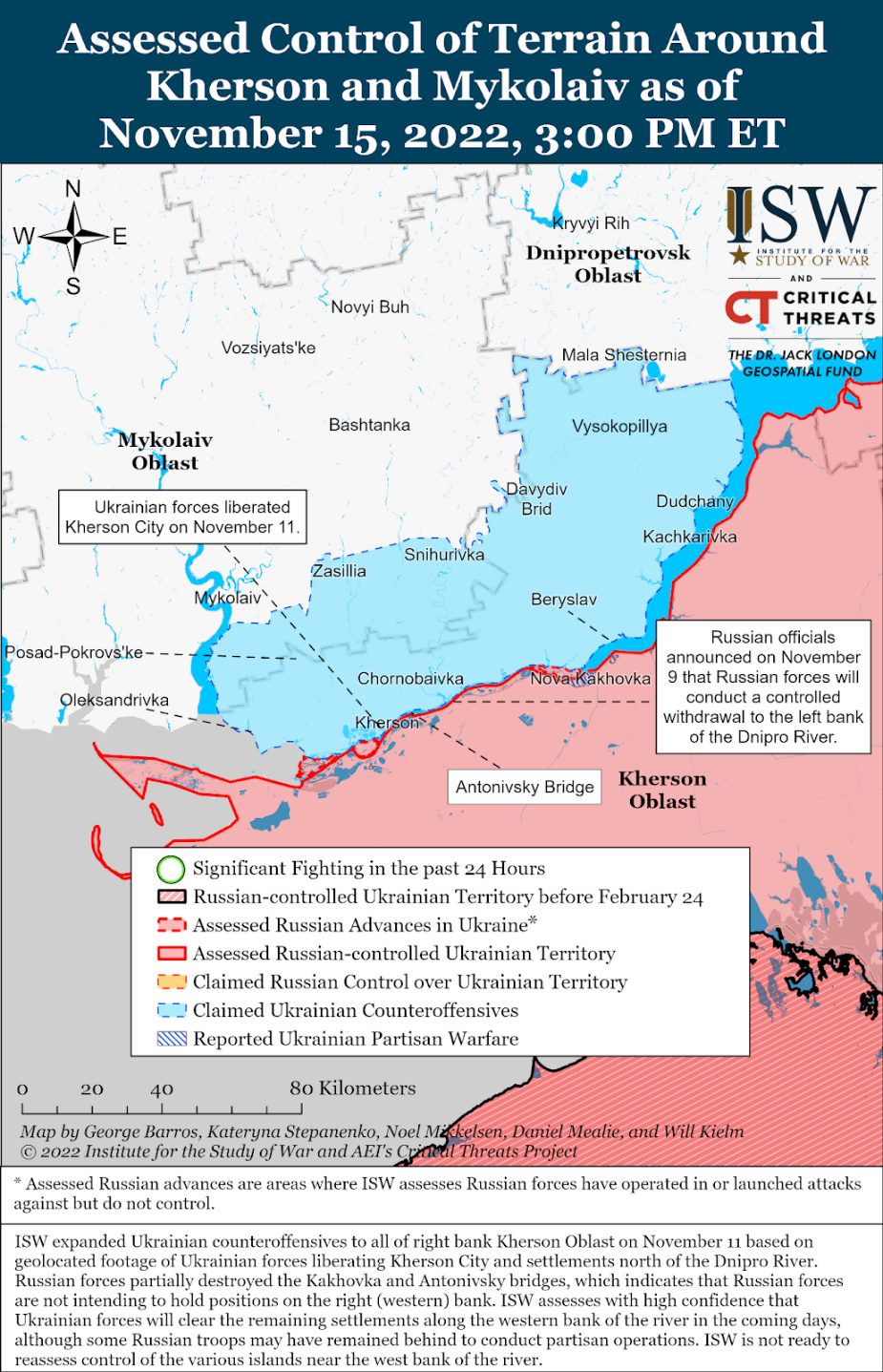 Map via ISW
Map via ISW- Russian forces continued establishing defensive positions east of the Dnipro River and pulling back from the coast of the left (east) bank as of November 15. Geolocated satellite imagery shows that Russian forces are establishing defensive lines just south of the Krasnoznamyanskyi Canal near Bekhtery, about 50km southwest of Kherson City.
- The severely limited Russian use of the Kerch Strait Bridge for military logistics likely has and will continue to cause long-term issues supplying forces in eastern Kherson Oblast, especially as Ukrainian forces can now interdict supply lines previously considered to be in rear areas.
- Russian logistics routes from Crimea into southern Ukraine are likely highly degraded. A Russian source reported that Russian officials elected to delay repairing the Kerch Strait rail bridge until summer or autumn 2023 as weather conditions are too dangerous to conduct the repairs and noted that one rail line is still usable.
- The Ukrainian General Staff stated that Russian officials only allow passenger traffic over the Kerch Strait road bridge and transport all other vehicles across the strait via ferry.
- Russian officials continued to set conditions to force the International Atomic Energy Agency (IAEA) to recognize Russian control over the Zaporizhzhia Nuclear Power Plant (ZNPP) and thereby de facto recognize the Russian annexation of occupied Ukraine.
- The IAEA announced on November 14 that Russian ZNPP authorities rejected a Ukrainian proposal to bring two reactors to a low power state from a hot shutdown state and that Russian officials are increasingly making “significant operational decisions,” noting that IAEA Director General Rafael Grossi expressed concern at “open contradictions” in decision making at the ZNPP.
